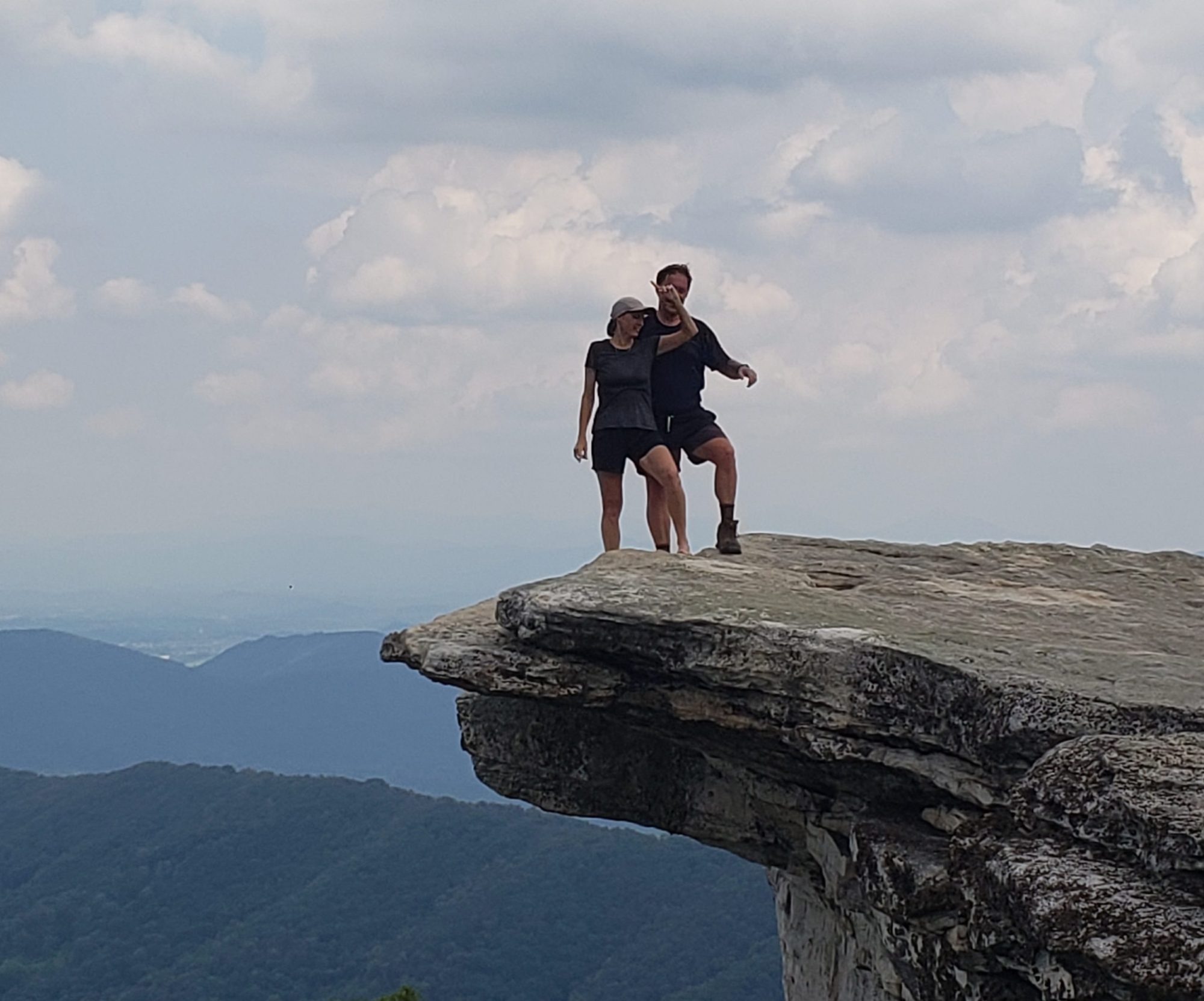We wondered what the word reef was doing in this parks name. Turns out that the early explorers to the region had much nautical experience and thought of the rock formation now called the “Waterpocket Fold” reminded them of a marine reef in that it impeded their transportation in the area. As it is a wrinkle in the Earth’s crust that is over 87 miles long (north-south) we could easily see why it would impede travel progress.

Here is a picture of a tiny portion of that waterpocket fold.

In the background you can see another picture of the reef so to speak.

We took a number of shorter hikes our firsts day in the park. The views were spectacular as expected. The river that etched out this canyon is called the Fremont River. We were hoping to paddle it somewhere but it was currently too dry to float our boat.

We spent another day hiking what is called the “Grand Wash”. A 5 mile journey through a really cool canyon. We could not hike it on day one as it had rained heavily the night before causing the Grand Wash to go into rinse cycle. Although it is not a slot canyon one could easily get “washed away” as the water level rises very quickly. A day later you can still see the mud leftover from the flowing water. Very sticky stuff actually. Made your boots really heavy as it stuck to the bottom of your soles.

Amazing how Mother Nature can create art in so many different ways. The canyon was running with water not 24 hours ago and now….

We figured the construction workers who built the canyon walls had their orbital sander on too high of a setting?

There were all sorts of holes in the sandstone in the area. We hypothesized that they were formed by small rocks being squeezed out of the sandstone and then erosion by water made them bigger.

Wonder what it would be like to try and hike through that slim passage?

Goin’ for a walk one day, in the very merry month of, well, September when the walls of the canyon started closing in on me.

As I could go no further it was time to exit this nifty spot and continue the hike.

We also chose to hike the Cohab Canyon Trail about 3 miles up toward the park’s campground. Ran into This “sumo wrestler” pushing up a large rock with his head.

We did not understand this sign in the middle of our canyon hike? It was not the only one we saw this day either. Maybe the National Park Service had a surplus of them and figured this would be a good use?

Came across a few of these interesting looking “things” on our canyon hike. We figure them to be petrified wood sticking out of the sandstone. If it has rings like a tree and bark like a tree, it must be a petrified tree.


Many times in life the best place to be is in a hole in the wall. It was a nice relief from the sun to find these cooler spots.

Each time the local department of transportation puts up a “beware of” sign we like to get a picture. This is the first time we had to google what the animal was. We had heard of the animal called a marmot but did not realize it was a large ground squirrel that grows up to 2 feet in length and can weigh up to 11 pounds. They hibernate in winter and are eaten by coyote, beaver, fox and eagles. Must be a big eagle to carry off 11 pounds of dinner meat. We supposed that it could become roadkill stew for some folks around here too.

This was a few miles down the road from our base camp. The kiosk had a phone number to call for reservations. No price indicated and we did not call but noticed someone new “glamping” at this location over our 4 day stay.
